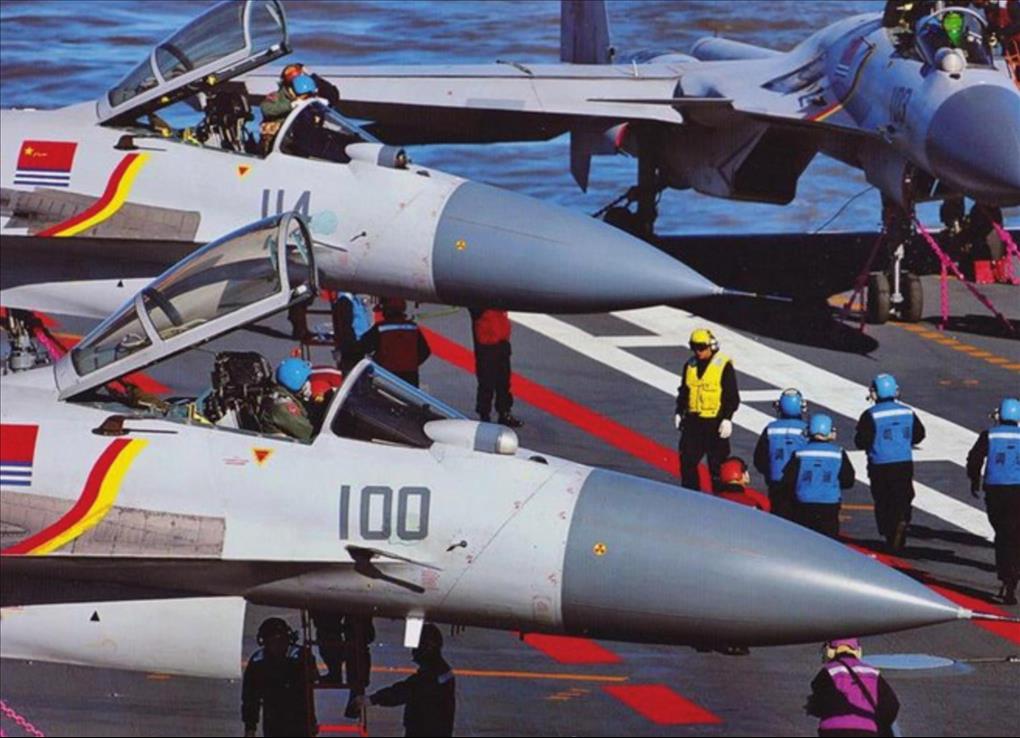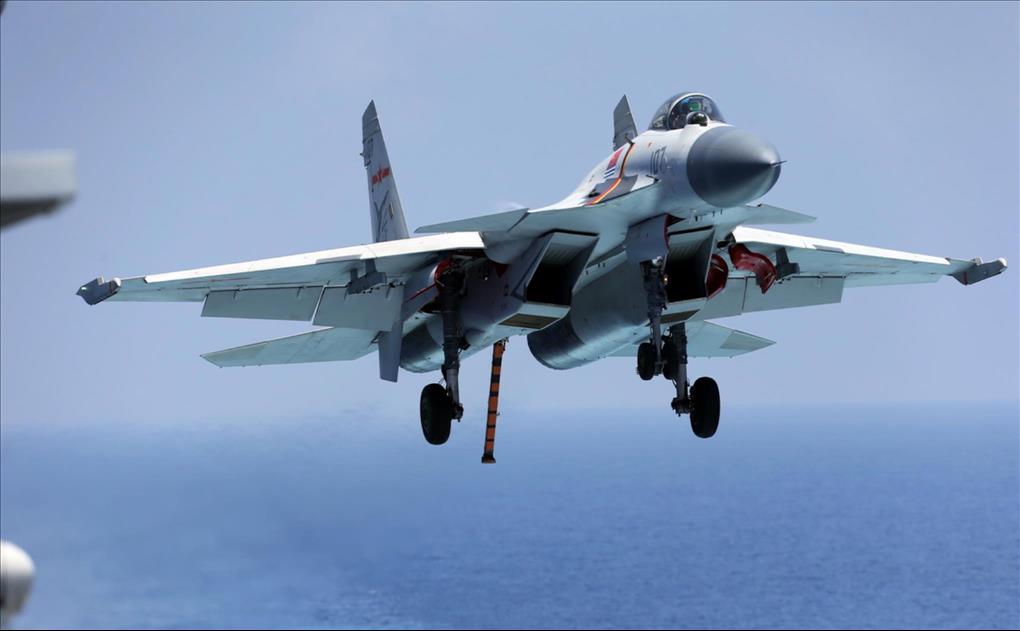(MENAFN- Asia Times) God forbid, should war break out, between the US and China for any reason, they would have to deal with US aircraft carriers, in a big way.
Those lethal nuclear-powered ''large deck'' US Navy carriers that ply the seven seas, also come with a formidable carrier strike group.
There is a reason why the US Navy's now complete 18-month Post Delivery Test and Trials phase for the USS Gerald R. Ford, an 18-month war preparation, crew members were asked to fend off high-speed incoming attacks such as incoming rockets, attack drones, small boat approaches, and other kinds of anticipated threats likely to inform any major confrontation with great-power adversaries.
For that very reason, and perhaps others, China is going deep into practicing countering aircraft carriers, according to Fu Qianshao, a Chinese military aviation expert.
According to , the Chinese People's Liberation Army Air Force (PLAAF) recently held a mock battle between a group of aircraft carrier-borne fighter jets and a land-based joint warplane formation.
The military exercise between the two sides became the whetstone to hone the forces'' capabilities in both countering and using aircraft carriers, the report said.
High above waters of the Yellow Sea, the PLA Northern Theater Command Air Force and Navy joined forces and dispatched land-based warplanes including KJ-200 early warning aircraft, J-10A fighter jets and JH-7A fighter bombers in the Red Team, as they faced the challenge of the Blue Team consisting of a group of J-15 carrier-borne fighter jets coming from the sea, China Central Television (CCTV) reported.
In the combat session, the Red Team's J-10A fighter jets engaged in contesting regional air superiority with the Blue Team's J-15s, winning the JH-10A fighter bombers some opportunities to penetrate the defense line as they eliminated their maritime targets.
It is believed that land-based anti-aircraft missile installations also participated in the drill, likely as a part of the Red Team.
The exercise simulated attack and defense under many different battlefield environments including air-to-air, air-to-sea and air-to-ground, CCTV reported.

Sailors conduct pre-flight checks on carrier-borne J-15 fighter jets on the flight deck of the aircraft carrier Liaoning prior to flight operations. Credit: PLAAF.
No scenarios were preset in the exercise, as neither side had any idea of what was coming, Senior Captain Bian Fengchun, the deputy commander of the participating naval aviation force, told CCTV.
''The exercise practiced the buildup of the reconnaissance and early warning system, fast anti-sea attack and coordinated attack and defense, and the officers'' skills in battlefield command were also enhanced,'' Bian said.
It also boosted the troops'' cross-service, coordinated combat capability, Bian said.
The mock battle helps in developing a series of tactics against land-based warplanes for aircraft carriers while also discovering ways to counter aircraft carrier attacks from land, Fu Qianshao told the .
China has the third largest air force in the world and could surpass the United States within the next 15 years.
This week, US media also reported that USAF Gen. Charles ''CQ'' Brown hinted at the possible retirement of the F-22 Raptor fighter jet as the force seeks to downsize and cut costs in a tough budget environment.
But in an aerial shooting war with the US Air Force, Beijing will need more than aircraft — namely fighter pilots with well-honed skills capable of facing off with some of the best jocks in the world, .
Underdeveloped tactics and training regimens which discourage initiative — among other problems — means that, as a whole, China's top guns are less proficient than they could be.
The PLAAF's highly centralized, top-down structure remains in place and stifles the skills of its fighter jocks, the report said.

A J-15 fighter jet prepares to land on the flight deck of the aircraft carrier Liaoning (Hull 16). The Liaoning, several guided-missile destroyers, frigates and dozens of aircraft attached to the Navy of the PLA took part in the exercise. Photo by Zhang Lei.
Unrealistic plans and by-the-book training regimens don''t translate well in combat, when those plans can be blown away the moment they meet enemy contact.
The PLAAF is also well aware of this, and is changing the way it trains pilots. These changes, over time, could do much to reduce the skill gap between the Chinese and American air forces.
During mock air battles, commanders have restricted the amount of information shared between formations before they wage simulated duels.
In some cases, the PLAAF will even ''frequently remove safety restrictions,'' sources said.
Ten years down the road … this, combined with greater numbers of fighter jets, plus a numerical advantage in the Western Pacific will undoubtedly narrow the gap.
To quote the greatest fighter jock, Chuck Yeager, who travelled the world meeting pilots of every nation, ''There wasn''t a dime's difference,'' between them.
According to Yeager, it all boiled down to who had the most experience — an issue China is moving to address.
MENAFN13052021000159011032ID1102078150
Legal Disclaimer:
MENAFN provides the information “as is” without warranty of any kind. We do not accept any responsibility or liability for the accuracy, content, images, videos, licenses, completeness, legality, or reliability of the information contained in this article. If you have any complaints or copyright issues related to this article, kindly contact the provider above.